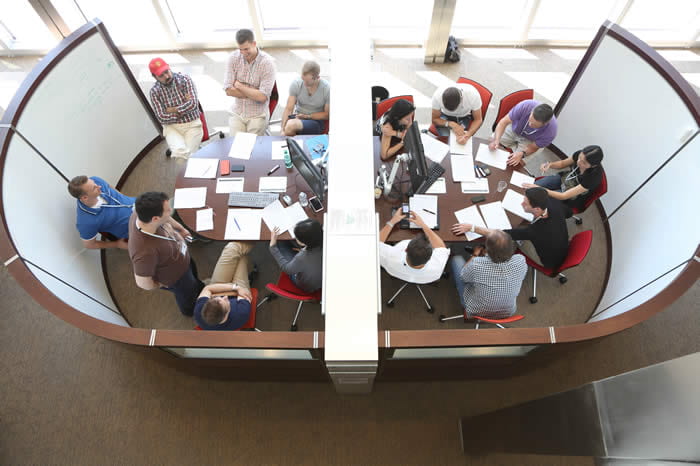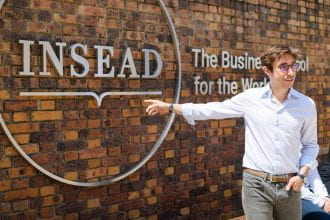Startup Bootcamps sharpen skills to bring ideas to life fast
“We are in the business of taking people and making them courageous,” says INSEAD Affiliate Professor Paul Kewene-Hite. “We give them the power to act even in the face of the unknown while developing practical business skills.”
This bold attitude is the bedrock for the Startup Bootcamps that Kewene-Hite has created and led since his arrival at INSEAD in 2009. An entrepreneurship expert with nearly a quarter-century of diverse business experience—including with startups and major tech firms as well as in the venture capital arena, Kewene-Hite has a profound understanding of the tools and processes that make successful ventures possible.
“I’m not a conventional academic. I’m an integrator and builder,” says Kewene-Hite, whose career includes roles as a venture capitalist, CEO, turnaround expert, Technology Evangelist at Apple and Director of Strategic Planning and Business Development at NEC Computers. “The Startup Bootcamp is full of the lessons I’ve learned as a result of my career’s worth of preparing for countless presentations to investors, executive teams and boards.”
The Bootcamps he directs are intensive, hands-on workshops offered under the aegis of INSEAD’s Centre for Entrepreneurship (ICE). Occurring during P1, they compress a lot of learning into a very short time—just 48 hours—and take place in both Singapore and Fontainebleau. The school has also run Bootcamps for alumni and invited guests in various locations, including Denmark, Germany, India, Japan, Spain and The Bahamas, among others. The structure is designed to help shift conventional thinking and to encourage students, and alumni, to gain innovative skills to create, develop, market and pitch a new venture.

The experience is exhausting, but “participants learn that mountains can be moved if they structure their time and act deliberately inside that structure,” says Kewene-Hite, adding that most of the students have never presented to investors before. Since its inception, approximately 2,000 participants have benefited from the Bootcamp. To meet the demand, Kewene-Hite has trained other colleagues to teach the Bootcamp, including Professors Patrick Turner, Adrian Johnson and Bill Magill.
Students sometimes come to the Bootcamp with an idea for a venture, but not always. Kewene-Hite says that many of the companies that have resulted from the Bootcamp were “dreamt up in the moment.” The programme’s structure allows students just one minute in the beginning to think aloud about what might be possible. After that, they organise themselves into teams and get to work. “By the time they present to investors 45 hours later,” says Kewene-Hite, “they know a great deal about the venture that was only a rough idea 45 hours before. By the end of the 48 hours they often know if they are truly committed to the nascent venture or if the Bootcamp was just a good learning experience.”
Most students find that experience incredibly rewarding and a great way to begin their INSEAD education. In fact, participants have said that the Bootcamp, alone, is worth the price of their entire tuition. Yet, the session is just one excellent component in an overall portfolio that distinguishes INSEAD’s approach to entrepreneurship. The Bootcamps complement the classroom learning, says Henrich Greve, the INSEAD Chaired Professor of Organisation and Management Theory, and Chair of the Entrepreneurship and Family Enterprise Area.
“We teach methods for the best possible outcome,” says Greve. “What is harder to teach is the process. The Bootcamp lets participants experience the process and improve it. Both content and process offer our students a lot—and both are necessary. Well-designed process experiences like the Bootcamp and some of our electives take special value because they enable participants to understand how to use the content and why it is valuable.”
Participants complete the Bootcamp before they enrol in their entrepreneurship electives, says Greve, so they benefit from the experience’s intensity and feedback. “The Bootcamp enables them to have a much better idea of what electives they need for their venture idea,” he says. “Step by step, they can build the knowledge they need, and in some electives they can also directly improve the venture through rigorous elective exercises.”
Equally vital is the rapid-fire exposure to so many key elements of entrepreneurship, says Kewene-Hite. He says that participants respond well to the disciplined approach that encourages structured collaboration. “They also like ‘war stories,’ and the Bootcamp has plenty of those, too,” he says. “It is good fun.”
Over the past five years, an array of participants have experienced the Bootcamp. Many launched ventures as a result. A small sample includes:
Kenergy Renewables (Kenya, Africa)
At one Bootcamp, a renewable energy expert from Kenya presented an idea for the creation of a wind-based power company. In the audience of 34 was an engineer from the UK. The engineer had never worked on renewable energy before but he liked the idea and so formed a team with the renewable expert. They worked together at the Bootcamp and continued their collaboration, co-founding Kenergy Renewables, a portfolio wind-farm development company based in Kenya with a focus on East Africa.
MBAcars.com (California, USA)
A participant presented several compelling ideas in the first hours of the Bootcamp. An enthusiastic team joined him and worked for 48 hours on his idea for a long-term car rental company. All reported having a powerful learning experience, but following the Bootcamp the others decided to embrace career opportunities in other industries/sectors. The idea originator started the company in 2010 with his wife. (“I rented their first car,” says Kewene-Hite.) MBAcars is now a very successful three-year-old startup serving a majority of INSEAD MBA students in France as well as expatriates around France.
RepRegen Limited (London, UK)
A CEO brought his small ceramics and polymer manufacturing company to an alumni Bootcamp. A few others in the Bootcamp joined the RepRegen CEO during the weekend and the CEO reported several breakthroughs as he refined and refocused his company over the 48 hours. Among other offerings, RepRegen makes a patented powder that when mixed with a person’s own blood produces a hard and resilient ceramic that can be used to repair and reconstruct bone. That startup CEO successfully grew the company and is now building his next venture in Australia with the learning gained from the Bootcamp.
The INSEAD faculty members say the Bootcamp—both its challenges and rewards—is an excellent way to jump-start students’ MBA experience.
“The experience shows them a little of everything that they need to learn,” says Kewene-Hite. “For many, it shocks them into realising what they don’t know. Our hope is that when they return to campus they are that much more focused and committed to all of their courses.”
To find out more about taking part in an alumni bootcamp, please click on this link.


